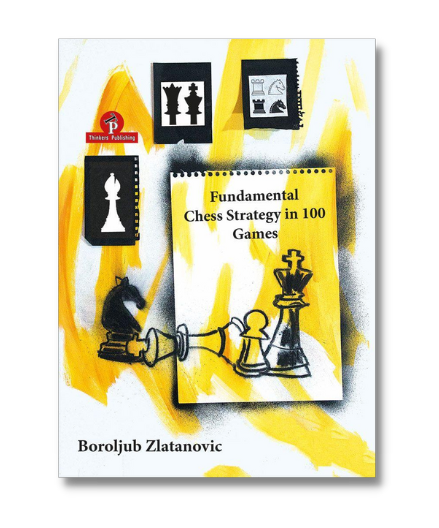Book review of Fundamental Chess Strategy in 100 Games
“If you fail to plan, you are planning to fail.” – Benjamin Franklin.
As the title indicates, this book is devoted to the important topic of strategic concepts in chess. While tactics are always important, it’s the strategic decisions that mostly determine the course of a game. Hence, chess strategy must be mastered to avoid playing aimlessly. As Franklin says in the above quote, aimless and unfocussed play is a recipe for failure.

The author, IM Boroljub Zlatanovic, is a FIDE trainer, and his training credentials shine through in this book. The book is mostly aimed at club players to masters, although the author says that higher-rated players could also benefit from it. The author’s assessment of the book’s level is appropriate, and the book will be especially useful for club players.
The book is divided into eight chapters:
- The Center
- Bishop versus Knight
- The Bishop Pair
- Open Files
- Pawn Structures
- Coordination and Harmony
- The Initiative
- Blockades and Prophylaxis
The chapter on pawn structures is the longest, which reflects the fundamental importance of this topic.
The author has chosen to discuss the topics using complete games so that readers can see how the strategic concepts shaped the game from beginning to end. Of course, an individual game can contain more than one strategic concept, and the author provides plenty of cross-references to different concepts as appropriate.
Many of the games are classical encounters, and the author is clearly an admirer of Capablanca, Rubinstein, and Nimzowitsch. Of the modern players, Karpov is used as a role model. The author also includes several of his own games to illustrate the themes. The selection of games is appropriate for the target audience, as the strategic concepts can be clearly seen. In contrast, many modern games between elite players are difficult for club players to understand, given their complex nature and extensive computer-backed preparation.
The annotations to the games are particularly good, and there are plenty of verbal comments. The analytical variations are also at an appropriate level for the book. It’s rare for the book to enter into deeply nested variations that could easily overwhelm the reader and hinder learning.
The author’s enthusiasm for the topics is clear throughout the book, and he constantly urges readers to adhere to some general principles, such as “avoid protecting your pawn with 3 or more pieces”, “do not rush” and “be careful to the very end”. The last piece of advice is particularly relevant for players who relax once they obtain a winning position, and then blunder the game away through careless play.
Two examples from the book are given below, with annotations from the book.
In summary, this is a highly instructive book on a fundamental aspect of chess. The author has covered the important strategic concepts using a good selection of games and commentary, and the book will be particularly useful for club players.
Have any thoughts or questions? Let us know in the comments below!
- New Release: Chess Analysis – Reloaded - March 9, 2024
- Review: The Art of The Endgame – Revised Edition - February 14, 2024
- Review: Study Chess with Matthew Sadler - December 13, 2023
